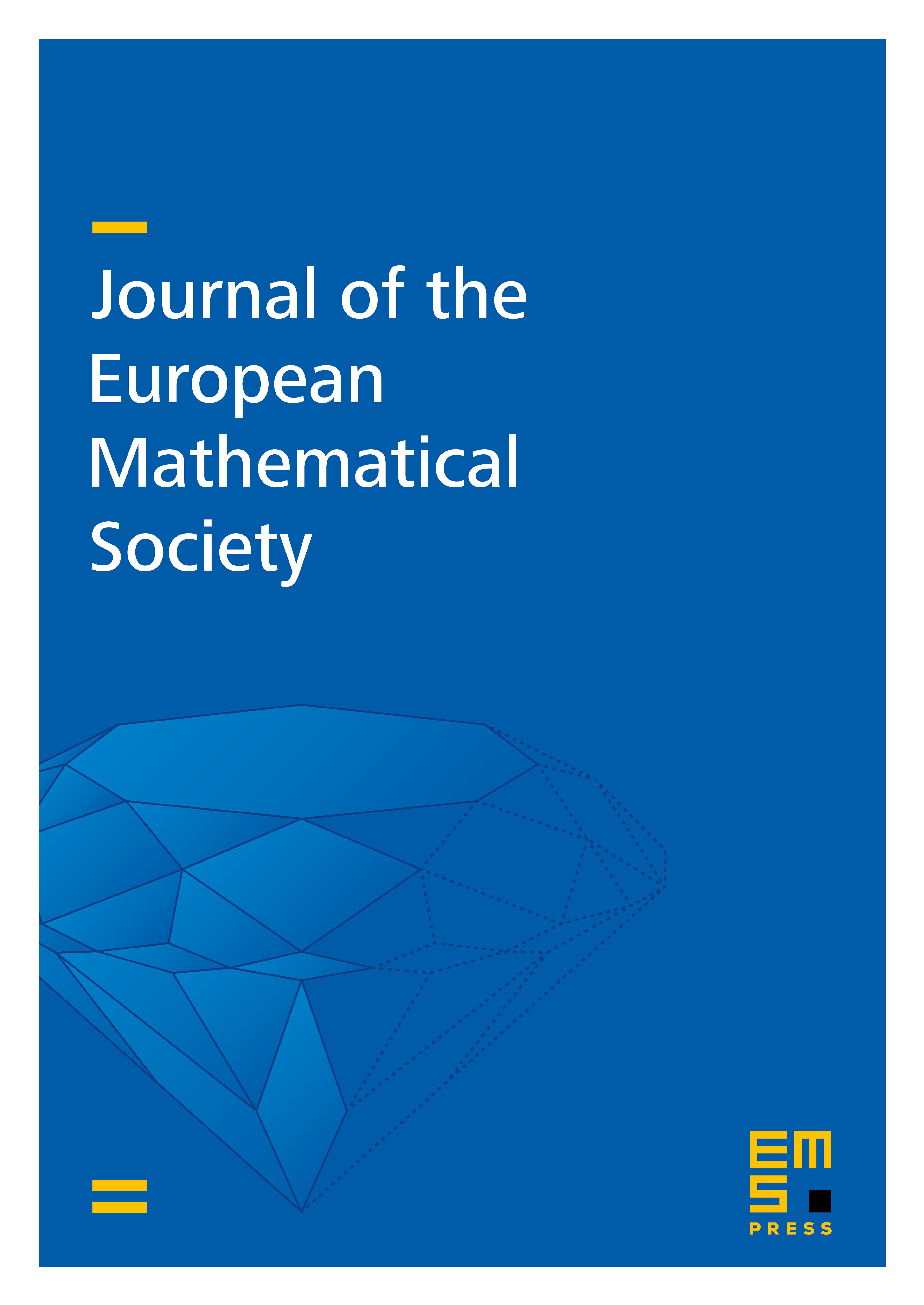A maximum principle for mean-curvature type elliptic inequalities
James Serrin
University of Minnesota, Minneapolis, United States

Abstract
Consider the divergence structure elliptic inequality
in a bounded domain . Here
and , satisfy the following conditions
for all , where , are given non-negative functions. Our interest is in the validity of the maximum principle for solutions of (1), that is, the statement that any solution which satisfies on must be a priori bounded above in .
This question arises, in particular, when one is interested in the mean curvature equation
Cite this article
James Serrin, A maximum principle for mean-curvature type elliptic inequalities. J. Eur. Math. Soc. 8 (2006), no. 2, pp. 389–398
DOI 10.4171/JEMS/59